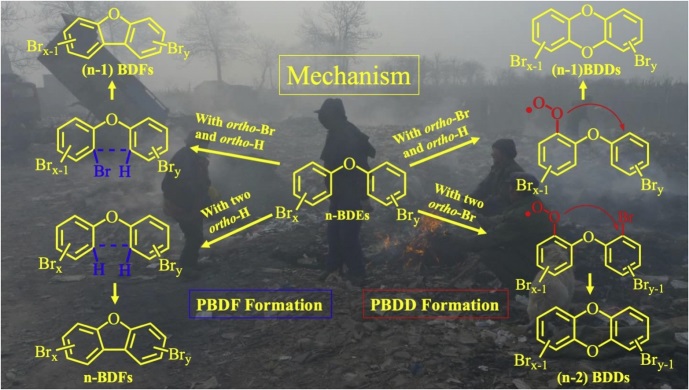
【标题】The formation pathways of polybrominated dibenzo-p-dioxins and dibenzofurans (PBDD/Fs) from pyrolysis of polybrominated diphenyl ethers (PBDEs): Effects of bromination arrangement and level
【期刊】Journal of Hazardous Materials
【第一作者】 梁佳豪
【摘要】This study presents comprehensive formation pathways of polybrominated dibenzo-p-dioxins and dibenzofurans (PBDD/Fs) from the pyrolysis of polybrominated diphenyl ethers (PBDEs). A total of 23 PBDE congeners, from mono- to hepta- brominated, were selected to conduct the pyrolysis experiments. The results suggest that n-PBDEs (where n means the number of bromine substituents) can transform into n/(n-1) PBDFs and (n-1)/(n-2) PBDDs as long as they meet certain structural requirement. One single PBDE congener can only transform (if possible) specific PBDF or PBDD based on their specific brominated arrangement by direct/oxygen bridge connecting the two ortho-carbon atoms. Among all selected BDEs, we found that only 2,2′,4,4′,5,5′-hexaBDE (BDE-153) can transform into 2,3,7,8-tetraBDD, which is most toxic congener among these group of compounds. When the degree of bromination increased, the yield of polybromobenzene increased, while that of the PBDD/Fs decreased, suggesting that the higher PBDEs favors to break the ether bond to form polybromobenzene, while the lower PBDEs favor transformation into PBDD/Fs. We proposed that the results in this study greatly improved our understanding on the transformation of PBDD/Fs from PBDEs in the pyrolysis process.
【文章链接】https://doi.org/10.1016/j.jhazmat.2020.123004
